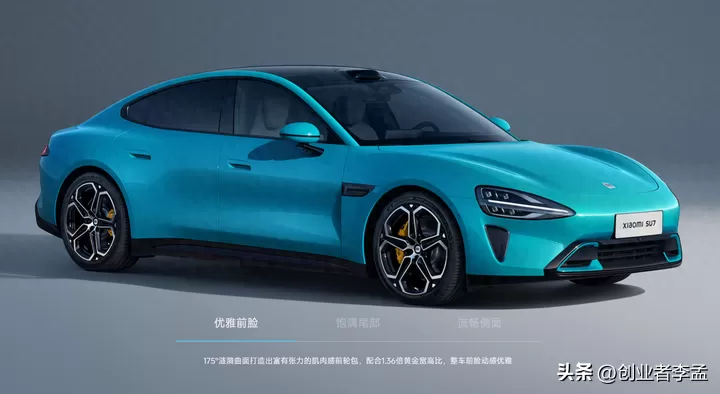Xiaomi chose the name SU7 for its car based on specific naming logic and market considerations. We can't think about this in the same way as naming their phones, where some car models maintain a single name but release versions like the 2023 or 2024 models.
The first model of Xiaomi's car is named SU7. and this has a unique meaning behind it. First, "SU" might stand for "Speed Ultra," indicating super speed, which aligns with Xiaomi's high-performance brand image. This also matches the design and driving feel of sports cars, much like the high-end S series of Mercedes, which meets demand very well.

Second, the number "7" might be influenced by the popular use of "7 series" in the automotive industry. It could also be borrowing from the naming conventions of brands like BMW, designating their flagship model as SU7. Xiaomi's founder Lei Jun mentioned that they wanted a name that was easy to remember, easy to sell, and could reflect Xiaomi's car-making philosophy: technology x ecology, an advanced mobile intelligent space.
Tesla's Model 3 naming was a result of trademark issues that led to abandoning the original name Model E.
Tesla typically names its models in the format "Model + letter." Initially, the Model 3 was expected to be named Model E, where the letter E was meant to represent "Electric" or "Economic," forming a "SEX" combination with S (Sedan) and X (Crossover). However, since the Model E trademark was already registered by Ford, Tesla could not use this name and ultimately chose the number 3 for the model.
Many cars are named based on size, with some brands using purely numeric names where the numbers often relate to the model's grade or size. For instance, Peugeot cars follow the x0x and x00x rules for sedans and SUVs, with higher numbers indicating higher grades. There are also combinations of letters and numbers, where letters typically represent the car series and numbers indicate specific models or performance. BMW's naming convention, for example, usually consists of three digits and a letter, such as 840i, where the numbers represent the series and the letter indicates the engine type.
Therefore, we can see that Xiaomi's choice of "SU" as the car's prefix, where "S" might stand for "Speed," emphasizes the vehicle's performance characteristics. Meanwhile, "U" phonetically resembles the Chinese name for Xiaomi ("SU"), giving the name both brand identity and cultural significance. The number "7" is commonly used in the automotive industry to denote high-end models, similar to BMW's 5 series and 7 series.
By adopting this number, Xiaomi likely aims to imply a high-end positioning for its product, with plans to launch more series in the future, such as SU5 and SU3. to meet different market demands. This naming strategy also considers consumer psychology and market acceptance. A product name directly impacts the first impression consumers have of the product. By following industry conventions in naming, Xiaomi ensures that consumers can quickly understand and accept the new product. What do you think about this? Feel free to follow me, entrepreneur Li Meng, and join the discussion!





